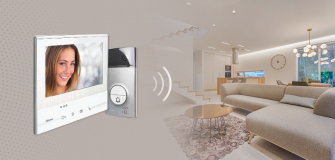What Are IoT Switches, And How Do They Work?
Introduction
The Internet of Things (IoT) has revolutionized our lives, from our cars to our homes. One of the most significant advancements in IoT technology is IoT switches. These switches provide users with remote control capabilities over their devices. They are smart switches that allow users to control and monitor their devices from their smartphones, tablets, and other devices.
They can be used in light regulators, DND MMR switches, modular MCB switches, Legrand rotary switches, modular MCBs, switch accessories, and cover plates. In this blog, we will discuss what IoT switches are, how they work, the types of IoT switches, and their use cases.
How Do IoT Switches Work?
IoT switches connect to the internet and communicate with other devices in your home. They are designed to work with many devices for your convenience. These switches are connected to the internet through Wi-Fi or Bluetooth, which allows users to control their devices over the internet.
IoT switches are essentially smart switches used to control and monitor electrical appliances, lighting, and other devices. Users can control their devices remotely using a smartphone app or a web interface. These switches are designed to be easy to use and can be configured to work with various devices.
Types of IoT Switches:
There are several types of IoT switches available in the market. Some of the most popular types of IoT switches include:
- Smart Light Switches: These switches are designed to control the lighting in your home. They allow you to remotely turn your lights on and off, set schedules, and adjust brightness levels.
- Smart Plugs: These are essentially smart outlets that allow you to control the devices plugged into them. They can control devices such as coffee makers, air conditioners, and other electrical appliances.
- Smart Thermostats: These are designed to control the temperature in your home. They allow you to adjust the temperature remotely and can also be set to adjust the temperature automatically based on your preferences.
- Smart Locks: These locks allow you to control your home’s locking mechanism remotely. They can unlock your doors from your smartphone, tablet, or other devices.
Examples of Use Cases for IoT Switches:
IoT switches can be used in various ways to make your life easier and more convenient. Some of the most common use cases for IoT switches include:
- Energy Efficiency: IoT switches can be used to control the energy consumption of your home’s electrical appliances, lighting, and other devices. You can set schedules for your devices to turn off when they are not in use, which can help you save energy and money on your electricity bills.
- Convenience: IoT switches can be used to make your life more convenient. For example, you can use a smart light switch to turn your lights on and off remotely or a smart plug to control your coffee maker from your bed in the morning.
- Security: IoT switches can also be used to enhance the security of your home. For example, you can use a smart lock to lock and unlock your doors remotely, or you can use a smart thermostat to monitor the temperature in your home and detect any anomalies.
Security Considerations for IoT Switches:
One important consideration when using IoT switches is security. As with any internet-connected device, there is always a risk of hackers gaining access to your devices and controlling them remotely. Following best practices for securing your IoT devices, such as using strong passwords and keeping your firmware up-to-date, is essential.
While IoT switches can make your life easier and more convenient, they also come with security risks. Hackers can access and control your devices remotely, which can be a serious security concern. To ensure the security of your IoT switches, you should:
- Use Strong Passwords: Always use strong passwords for your IoT devices and change them regularly.
- Keep Your Firmware Up to Date: Keep your firmware up-to-date to protect your devices against the latest security threats.
- Use a Secure Wi-Fi Network: Always use a secure Wi-Fi network to connect your IoT devices to the internet.
- Disable Unused Features: Disable any features you are not using to reduce the attack surface of your devices.
How to Set Up an IoT Switch:
Setting up an IoT switch is relatively easy. Here is the step-by-step guide for you to set the whole system up.
- Choose Your IoT Switch: Choose the type of IoT switch you need based on your requirements.
- Install the Switch: Follow the manufacturer’s instructions to install the switch.
- Connect the Switch to the Internet: Connect the switch to the Internet using Wi-Fi or Bluetooth.
- Download the App: Download the app compatible with your switch.
- Pair the Switch with the App: Pair the switch with the app using the instructions provided.
- Configure Your Devices: Once your switch is connected to the app, you can configure your devices and use your IoT switch.
One of the primary benefits of IoT switches is their ability to provide remote control capabilities. This means you can control your devices from anywhere, as long as you have an internet connection. For example, if you forget to turn off your lights before leaving the house, you can use your smartphone to turn them off remotely rather than going back home to do it manually.
One of the most significant advantages of IoT switches is their ability to integrate with other smart home devices and systems, such as smart speakers, security cameras, and home automation systems. This integration allows you to create a more comprehensive and effective home automation environment controlled by a single app or interface.
Another benefit of IoT switches is their ability to provide automation and scheduling capabilities. For example, you can set your smart thermostat to automatically adjust the temperature based on the time of day or your preferences. You can also set your smart lights to turn on and off at specific times or adjust the brightness level based on the time of day.
Another significant benefit of IoT switches is their energy-saving capabilities. With the ability to schedule and automate lighting and other electrical devices, you can reduce energy consumption and save money on your electricity bills. For example, you can schedule your smart lights to turn off when you leave the house to ensure you are not unnecessarily wasting electricity.
IoT switches also offer greater flexibility and convenience than traditional switches. With the ability to control your devices from your smartphone, you can easily turn off lights or appliances from anywhere in the house without having to get up and walk to the switch. You can also create custom scenes or routines to control multiple devices simultaneously, such as setting the mood for movie night or preparing your home for bedtime.
Many IoT switches also offer voice control capabilities, allowing you to control your devices using voice commands through Amazon Alexa or Google Assistant. This feature adds an extra layer of convenience and accessibility, particularly for people with mobility or accessibility needs.
Conclusion
IoT switches are a revolutionary way to control your home’s electrical appliances, lighting, and other devices. They are used with light regulators, DND MMR switches, modular MCB switches, Legrand rotary switches, modular MCBs, switch accessories, and cover plates. Legrand Eshop makes one of the best IoT switches out there. They are smart switches allowing users to control and monitor their devices from their smartphones, tablets, and other devices.
We discussed what IoT switches are, how they work, the types of IoT switches, and their use cases. We also discussed the security considerations you need to consider when using IoT switches and how to set up an IoT switch. With IoT switches, you can make your life more convenient and secure.




















